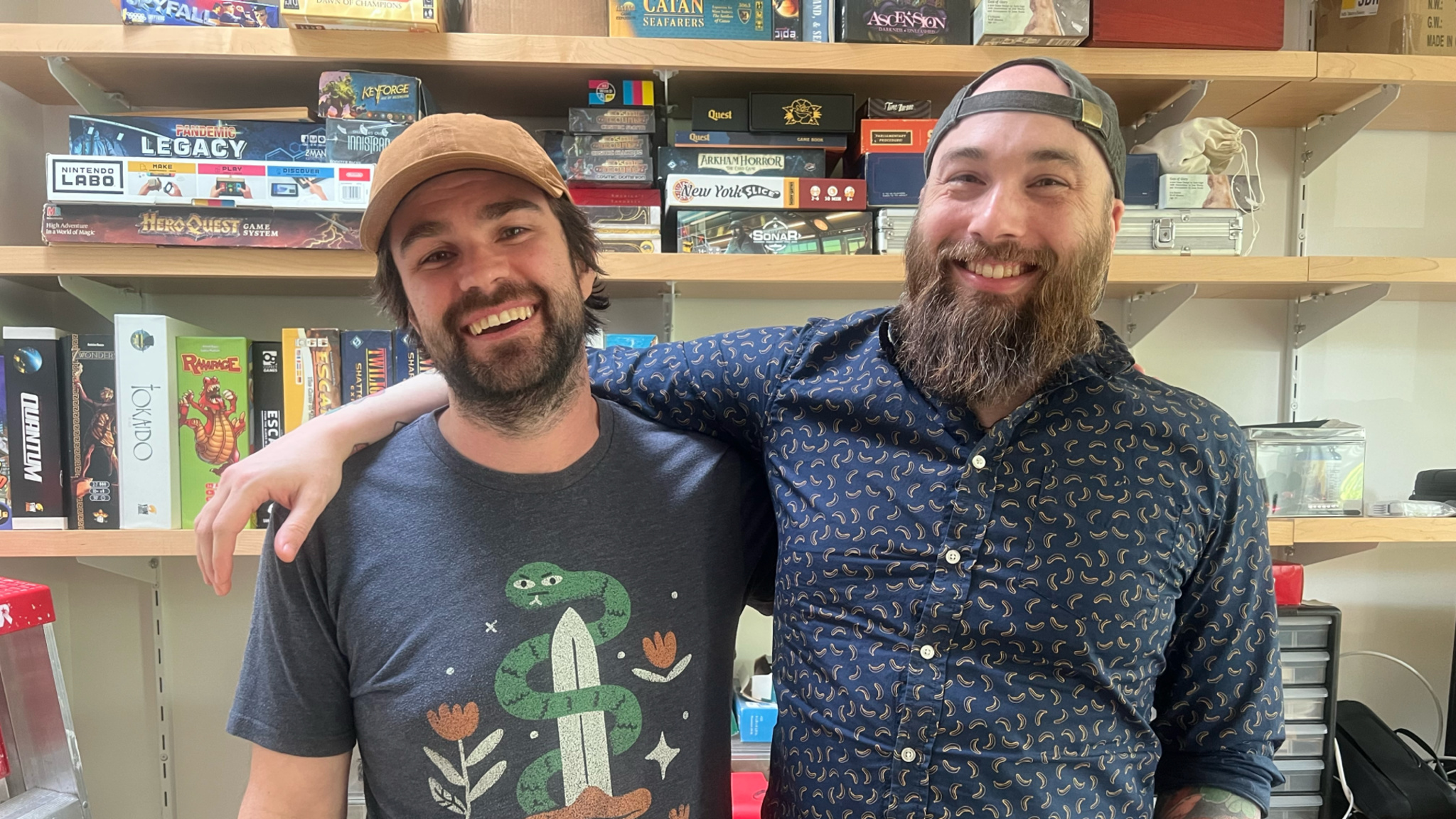
Knotwords is a clever twist on crossword puzzles — so much so that one would expect creators Zach Gage and Jack Schlesinger to be longtime crossword masters who set out to build themselves a new challenge.
One would be totally wrong.
“Crosswords never hit with me,” says Gage, with a laugh. “I dragged myself kicking and screaming into this one.”
It’s not about ‘What random box of words will you get?’ but, ‘What are the decisions you’ll make as a player?’
Jack Schlesinger, Knotwords
In fact, Gage and Schlesinger created the Apple Design Award finalist Knotwords — and the Apple Arcade version, Knotwords+ — not to revolutionize the humble crossword but to learn it. “We know people like crosswords,” says Schlesinger, “so we wanted to figure out what we were missing.” And the process didn’t just result in a new game — it led them straight to the secret of word-game design success. “It’s not about ‘What random box of words will you get?’” says Schlesinger, “but, ‘What are the decisions you’ll make as a player?’”

Gage and Schlesinger are longtime design partners; in addition to designing Knotwords and Good Sudoku with Gage, Schlesinger contributed to the 2020 reboot of SpellTower and the Apple Arcade title Card of Darkness. Neither came to game design through traditional avenues: Gage has a background in interactive art, while Schlesinger is the coding mastermind with a history in theater and, of all things, rock operas. (He’s responsible for the note-perfect soundtracks for many of the duo’s games.) And they’re as likely to talk about the philosophy behind a game as the development of it.
I had been under the mistaken impression that the magic of a simple game was in its simple rule set. The magic actually comes from having an amazing algorithmic puzzle constructor.
Zach Gage
“When you’re playing a crossword, you’re fully focused on the clues. You’re not focused on the grid at all,” explains Gage. “But when you’re building a crossword, you’re always thinking about the grid. I wondered if there was a way to ask players not to solve a crossword but recreate the grid instead,” he says.
Knotwords lets players use only specific letters in specific sections of the grid — a good idea, but one that initially proved elusive to refine and difficult to scale. “At first, the idea really wasn’t coming together,” says Gage, “so we took a break and built Good Sudoku.” Building their take on sudoku — another game with simple rules and extraordinary complexity — proved critical to restarting Knotwords. “I had been under the mistaken impression that the magic of a simple game was in its simple rule set,” Gage says. “The magic actually comes from having an amazing algorithmic puzzle constructor.”

Problematically, they didn’t just have one of those just lying around. But they did have Schlesinger. “I said, ‘I will make you a generator for Knotwords in two hours,’” Schlesinger laughs. That was maybe a little ambitious. The first version took eight hours and was, by his own account, not great. However, it proved a valuable learning experience. “We learned that we needed to model a player. What would someone do here? What steps could they take? If they make a mistake, how long would it take them to correct it?” In short, the puzzle generation algorithm needed to take into account not just rules, but also player behavior.
The work provided the duo an answer for why people liked crosswords. It also did one better by addressing one of Gage’s longstanding game-design philosophies. “To me, the only thing that’s fun in a game is the process of getting better,” says Gage. “In every game I’ve made, the most important questions have been: What’s the journey that people are going through and how can we make that journey fun? And it turns out it’s easy to discover that if I’ve never played a game before.”
Find Knotwords+ on Apple Arcade
Behind the Design is a series that explores design practices and philosophies from each of the winners and finalists of the Apple Design Awards. In each story, we go behind the screens with the developers and designers of these award-winning apps and games to discover how they brought their remarkable creations to life.